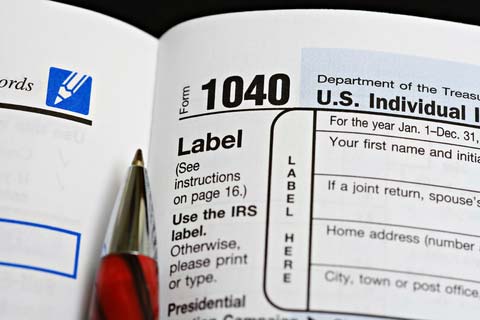How Are Our Federal Tax Dollars Spent?

We all grumble about having to pay taxes, but few people really know how the government spends that money. Where do our tax dollars really go?
In fiscal year 2008, federal government spending reached $3 trillion, which is roughly 21 percent of the country's gross domestic product (GDP). Of that amount, more than $2.5 trillion was financed by federal tax revenues collected by the government. The remaining $459 billion was financed by government borrowing to make up for the budget deficit, which occurs when total government expenditure exceeds total tax revenue in a given year. [Graphic details spending]
Three main areas each accounted for approximately one-fifth of the budget, while two sections of spending each made up about one-tenth, and the remaining fifth of the budget was used to finance a variety of programs. According to the Center on Budget and Policy Priorities, here are the most expensive programs:
- Defense and international security: In fiscal year 2008, $625 billion, or roughly 21 percent of the government budget was spent on the military and other initiatives to protect the nation. This figure also includes the cost of supporting American operations in Iraq and Afghanistan.
- Social Security: An additional 21 percent of the budget, equal to about $617 billion, was earmarked for Social Security, one of the largest government programs in the world. Social Security provides retirement benefits, survivors' benefits and disability benefits to millions of retired or disabled workers, or surviving children and spouses of deceased workers.
- Medicare, Medicaid and CHIP: In 2008, $599 billion, or 20 percent of the government budget, was used to finance three health insurance programs – Medicare, Medicaid and the Children's Health Insurance Program (CHIP). Approximately $391 billion went to Medicare, which provides health coverage to people who are over the age of 65 or who meet other criteria such as disability. The remaining amount helped to finance Medicaid and CHIP, which provide health care or long-term care to low-income children, parents and seniors and people with disabilities. Both the Medicaid and CHIP programs involve the federal government matching payments made by the state.
- Safety net programs: The federal government supports so-called safety net programs that provide aid (other than, or in addition to health insurance and/or Social Security benefits) to individuals and families in need. Safety net programs accounted for approximately 11 percent of the 2008 federal budget, which equaled $313 billion. According to the Center on Budget and Policy Priorities, safety net programs include: the refundable portion of the earned-income and child tax credits; programs that provide cash payments to eligible individuals or households, including Supplemental Security Income; various forms of in-kind assistance for low-income families and individuals, including food stamps, school meals, low-income housing assistance, child-care assistance, and assistance in meeting home energy bills; and various additional programs that assist at-risk individuals and families.
- Interest on the national debt: For every dollar that taxpayers send to the federal government, about a dime goes toward paying interest on the national debt. The federal government is required to make regular interest payments on money it has borrowed to close past budget deficits. This borrowed money makes up the national debt, which currently exceeds $12 trillion. In fiscal year 2008, interest payments accounted for 8 percent of the budget, or roughly $253 billion.
The remaining fifth of federal government spending goes toward financing a variety of other programs and public services, including: providing benefits and health care to veterans and retired federal employees; investing in education, scientific and medical research, and basic city infrastructure such as roads, bridges and airports. A small amount – about 1 percent – went to non-security international programs, including those that provide humanitarian aid.
Sign up for the Live Science daily newsletter now
Get the world’s most fascinating discoveries delivered straight to your inbox.

Denise Chow was the assistant managing editor at Live Science before moving to NBC News as a science reporter, where she focuses on general science and climate change. Before joining the Live Science team in 2013, she spent two years as a staff writer for Space.com, writing about rocket launches and covering NASA's final three space shuttle missions. A Canadian transplant, Denise has a bachelor's degree from the University of Toronto, and a master's degree in journalism from New York University.
Why is yawning contagious?
Scientific consensus shows race is a human invention, not biological reality









